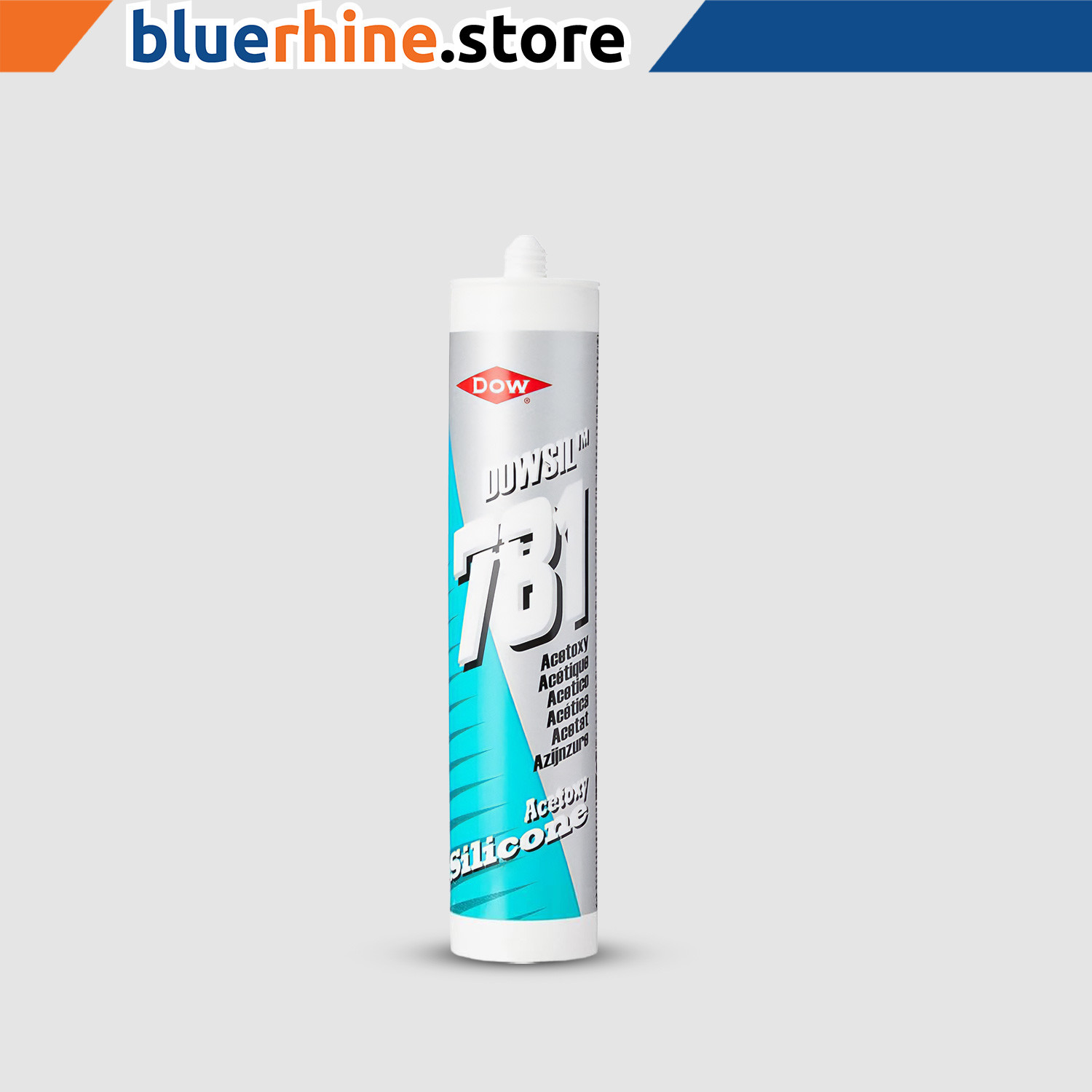DOWSIL™ 781 Acetoxy Sealantis a one-part, silicone sealant which has good adhesion to a range of non-porous surfaces, including glass, aluminium, painted surfaces and composite boards. It offers excellent resistance to ageing, shrinkage, cracking and discolouring. It is also approved in certain countries for use in contact with potable water once cured.
FEATURES
- High strength
- Good elasticity
- Conforms to ISO 11600-F&G20LM
- Resistant to ozone, ultra-violet radiation and temperature extremes
TECHNICALSPECIFICATIONS AND STANDARDS
Conforms to ISO 11600-F&G-20LM. UK Water Regulations Advisory Scheme (WRAS)-approved Material.
HOW TO USE
Surface Preparation
Ensure that surfaces to be sealed are clean, dry, sound and free from frost, release agents, old sealants and other contaminants which could impair adhesion.
All surfaces should be cleaned and degreased by wiping with a suitable solvent such as DOWSIL™R-40 Universal Cleaner on a clean oil- and lint-free cloth before application of sealant.
Note: When using any solvent, always provide adequate ventilation. Avoid heat, sparks and open flames. Use solvent-resistant gloves. Observe and follow all precautions listed on the solvent container label.
Masking
Areas adjacent to the joints should be masked with tape to prevent contamination of the substrates and to ensure a neat sealant line. Masking tape should be removed immediately after tooling.
Priming
All joint surfaces other than glass and glazed ceramics should be primed. For specific advice, contact one of the regional service centres for technical assistance.
Back-Up Materials
When back-up material is required, a closed-cell polyethene backer rod is recommended. Low-tack polyethene tape should be used in joints too shallow to allow the use of a backer rod. Back-up materials provide back pressure and prevent three-sided adhesion that limits sealant movement capability.
Finishing
The joint should be tooled within 5 minutes of application to ensure good contact between the sealant and the substrate. Tooling of the sealant also gives a smooth, professional finish
Clean-Up
Excess sealant may be cleaned off tools and non-porous surfaces whilst in an uncured state using DOWSIL R-40 Universal Cleaner. If sealant is misapplied to porous substrates, it should be left until it is just cured and then removed by peeling, cutting or other mechanical means. Care should be taken not to damage plastic or coated surfaces
Joint Design
The sealant joint width should be designed to accommodate the movement capability of the sealant. When designing joints using DOWSIL 781 Acetoxy Sealant, the minimum width should be 6 mm. For joints between 6–12 mm wide, a seal depth of 6 mm is required. For joints above 12 mm wide, a width-to-depth ratio of 2:1 should be used. In situations where fillet joints are needed, a minimum of 6 mm sealant bite to each substrate is recommended. For joint dimensions greater than 25 mm, please contact one of the regional service centres for technical assistance.
Click here to visit our corporate site to learn about more products.

 Hello Guest
Hello Guest 













Be the first reviewer